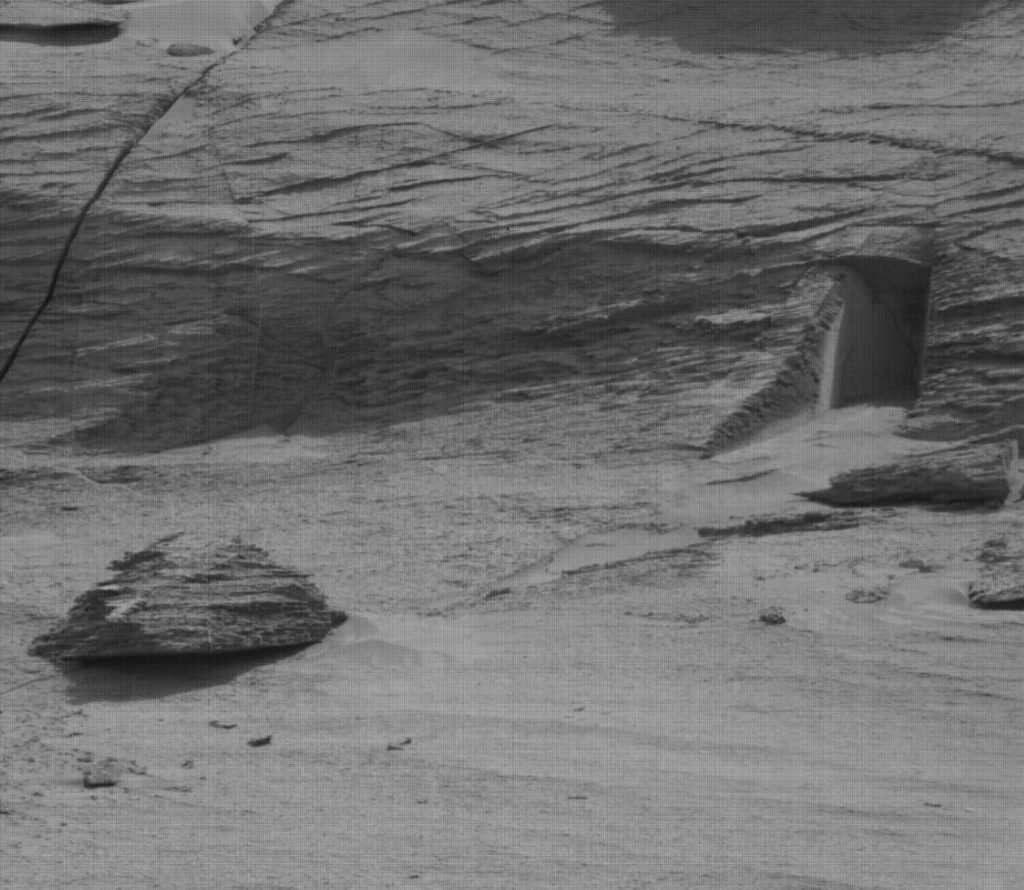China’s Zhurong rover has found evidence suggesting that water persisted on Mars for much longer than expected.

Zhurong landed in a large plain in Mars’ northern hemisphere called Utopia Planitia on May 15, 2021 – where NASA’s Viking 2 lander touched down in 1976.
Drink clean water at home… Get this filter now…
The rover’s primary mission, which lasted for three months, was to search for signs of ancient life. It has investigated the minerals, environment and distribution of water and ice in the plain, which is all part of the largest impact basin in the Martian northern lowlands. The rover continues to explore its landing site and send information back to the Tianwen-1 orbiter circling the planet.
Data returned from the rover’s initial survey of the basin suggests that the Utopia Planitia basin contained water during a time when many scientists believed Mars to be dry and cold.
A changing planet
Mars was once warm and wet billions of years ago, but something changed and caused the planet to become the arid, frozen desert it is today. The red planet entered this period during what is called the Amazonian epoch, which began about 3 billion years ago and remains ongoing.
“The most significant and novel thing is that we found hydrated minerals at the landing site which stands on the young Amazonian terrain, and these hydrated minerals are (indicators) for the water activities such as (groundwater) activities,” said lead study author Yang Liu.
Protect your home and car with the best EMP, solar flares and lightning shield available…
The researchers analyzed the Zhurong rover’s data about the sediments and minerals found in the basin as well as the analysis performed by several of the rover’s instruments of its surroundings. They found hydrated silica and sulfates, similar to hydrated minerals discovered by other missions studying different regions of the red planet.
The minerals were contained within bright-toned rocks, where colors help showcase their composition. The researchers determined that these rocks at the landing site make up a layer of duricrust. This type of layer can form when a substantial amount of water, either rising groundwater or melting subsurface ice, basically turns the soil into a hard crust once the water evaporates.
The discovery of this duricrust layer, which is thicker than duricrust likely formed by atmospheric water vapor found at other Martian landing sites, suggests that Utopia Planitia had a more active water cycle tens of millions of years ago than scientists expected.
Health Ranger Store: Buy Clean Food and Products to heal the world…
This adds to the increasing evidence discovered by Martian missions that the red planet went through cycles of being wet and warm, and dry and cold, rather than making one enduring, dramatic climate shift. These climatic ebbs and flows may have been the result of active volcanoes or impacts from other celestial objects, Yang said.
Fueling exploration
This discovery came as a surprise to researchers because orbiters’ previous observations didn’t uncover the signature of hydrated minerals in the landing site. It is why exploration using the rover was key, Yang said.
Utopia Planitia has been of interest to scientists because some speculate the region once hosted an ocean.
“So the discovery of hydrated minerals (has) significant indications on the geological and water history of the region and the climate evolution of Mars,” Yang said.
Yang said he hopes that the rover could analyze the layers of a crater in the plain to find more insights about the history of water in the region.
This perspective shows the discarded heat shield of the lander in the background of the landing site.
Prepare your retirement by investing in GOLD, SILVER and other PRECIOUS METALS…
This perspective shows the discarded heat shield of the lander in the background of the landing site.
The findings also suggest that there could be “considerable stores” of water in the hydrated minerals or even ground ice, which future human explorers could use during crewed missions to Mars.
“One of the most important resources for human explorers is water,” Yang said. “Hydrated minerals, which contain structural water, and ground ice can be used as the important water resource on Mars.” [CNN]
StrangeSounds.org is now running ad-free CLICK HERE TO SUPPORT MY WORK… I will send you a small gemstone if you give more than 25$… Thanks in advance!
Here some things to add to your disaster & preparedness kit:
- Protect your home and car with the best EMP, solar flares and lightning shield available…
- Drink clean water at home… Get this filter now…
- Health Ranger Store: Buy Clean Food and Products to heal the world…
- Prepare your retirement by investing in GOLD, SILVER and other PRECIOUS METALS…
- You will ALWAYS have electricity with this portable SOLAR power station…
- Qfiles is another great site for alternative news and information…













That doorway picture is very slick. Makes you wonder how it was cut like that, or if it was a natural formation. Hard to say? Looks great. Surprised they haven’t shown us fossils of humanoids. Some have said humans may have originated from Mars. Read some article many years ago. I guess we will never really know the truth?
It’s why man has so a longing to return to his home planet, who knows.. African coloring might had the original 1st gen Earth Humans, due to the new stronger heat… they got a really dark tan.